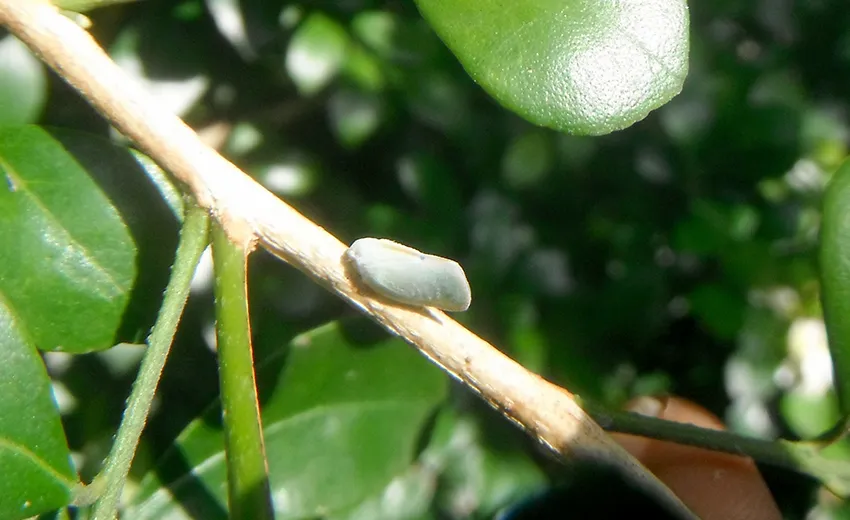When I capture photographs of plants, I sometimes come across spiders of all kinds, on this occasion I show photographs of three jumping spiders that I have found.
Cuando capturo fotografías de plantas, a veces me encuentro con arañas de todo tipo, en esta ocasión muestro fotografías de tres arañas saltarinas que he encontrado.
The first is a species of the genus Lurio. These spiders are common in Venezuela and Colombia, although they have also been reported from Brazil. Their legs are yellow except for the first pair of legs which are black. One thing that distinguishes them is their relatively long black legs that usually maintain a flexed position that resembles a defensive stance; this position has led them to be known as "scorpion spiders" because of the resemblance.
La primera es una especie del género Lurio. Estas arañas son comunes en Venezuela y Colombia, aunque también se ha informado de su presencia en Brasil. Sus patas son amarillas excepto el primer par de patas que son negras. Algo que las distingue son sus patas negras relativamente largas que por lo general mantienen una posición flexionada que asemeja una postura defensiva; esa posición ha hecho que se les conozca como "arañas escorpiones" por el parecido.
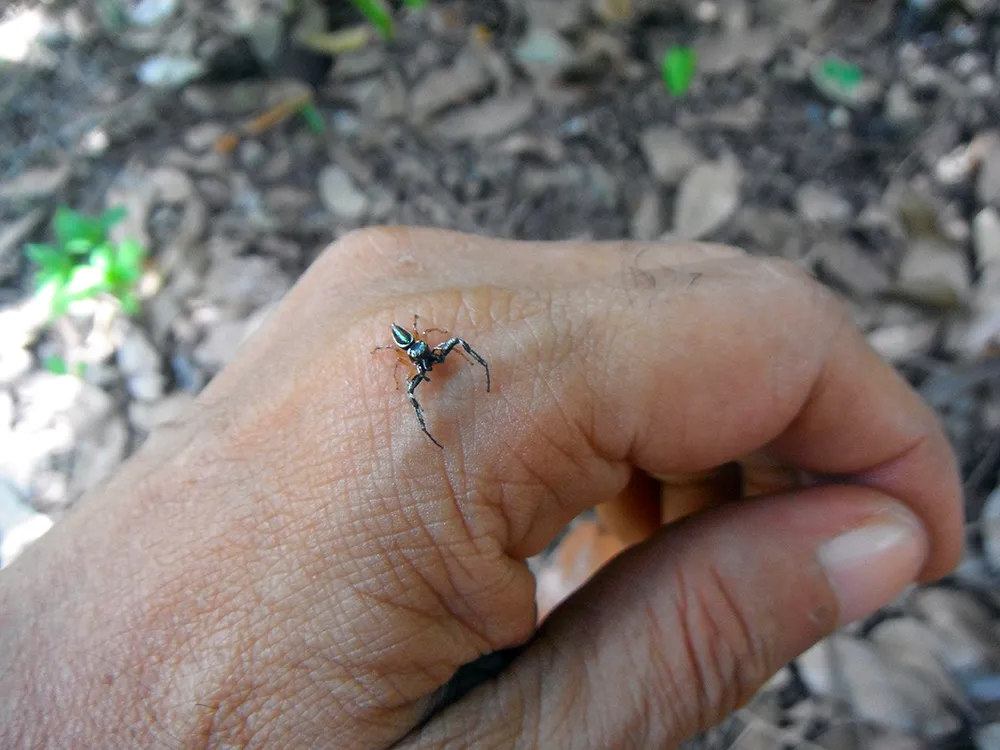
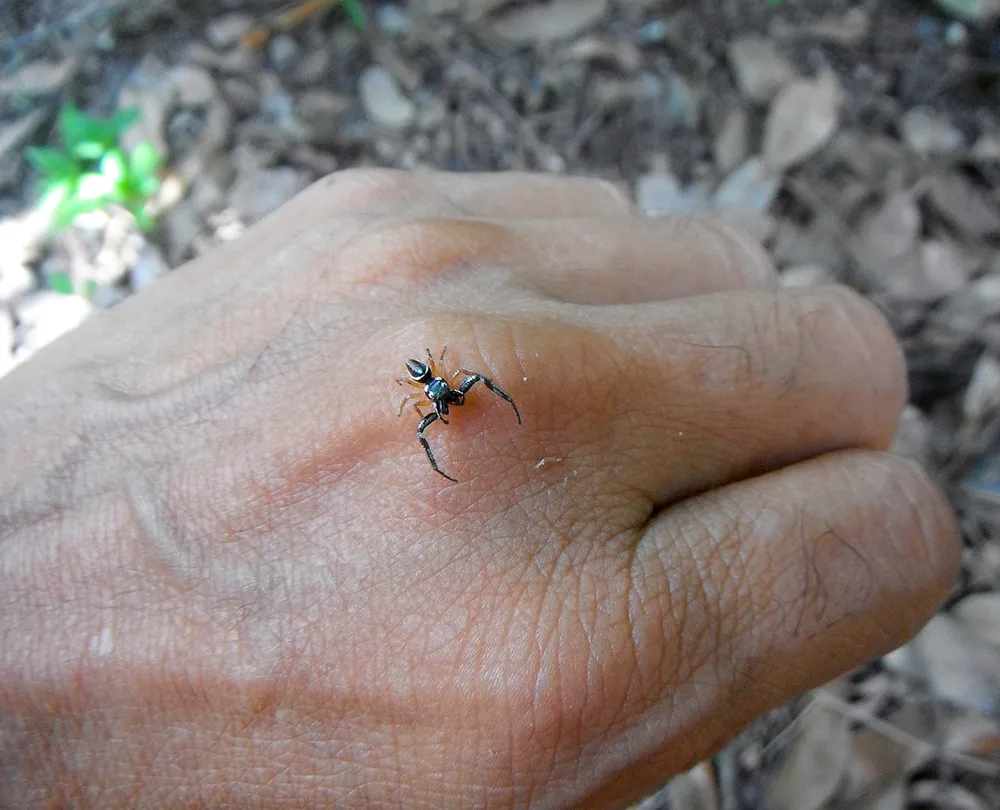
Another distinguishing feature is their coloration, which includes the presence of small iridescent green scales.
Otra característica distintiva es su coloración, que incluye la presencia de escamas pequeñas iridiscentes de color verde.
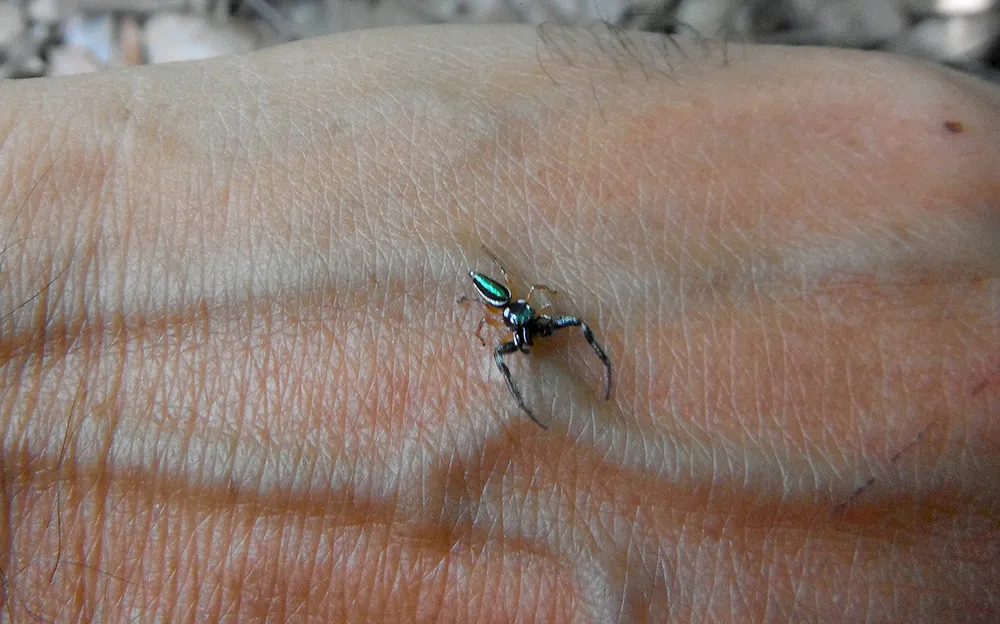
The second jumping spider is a species of the genus Lyssomanes. This spider is distinguished by its exaggerated chelicerae that function as weapons. Anatomically, chelicerae are jaw-like appendages or external fangs found on the sides of the mouth; between the pedipalps. Interestingly, fights of these spiders have been documented.
La segunda araña saltarina es una especie del género Lyssomanes. Esta araña se distingue por poseer quelíceros exagerados que funcionan como armas. Anatómicamente, los quelíceros son apéndices como mandíbulas o colmillos externos que se encuentran a los lados de la boca; entre los pedipalpos. Algo interesante es que peleas de estas arañas han sido documentadas.
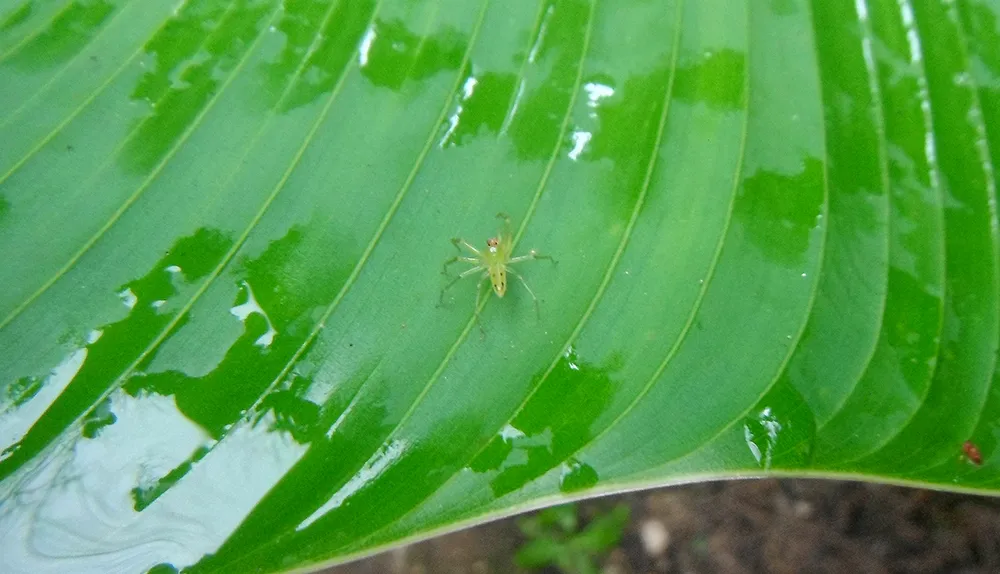
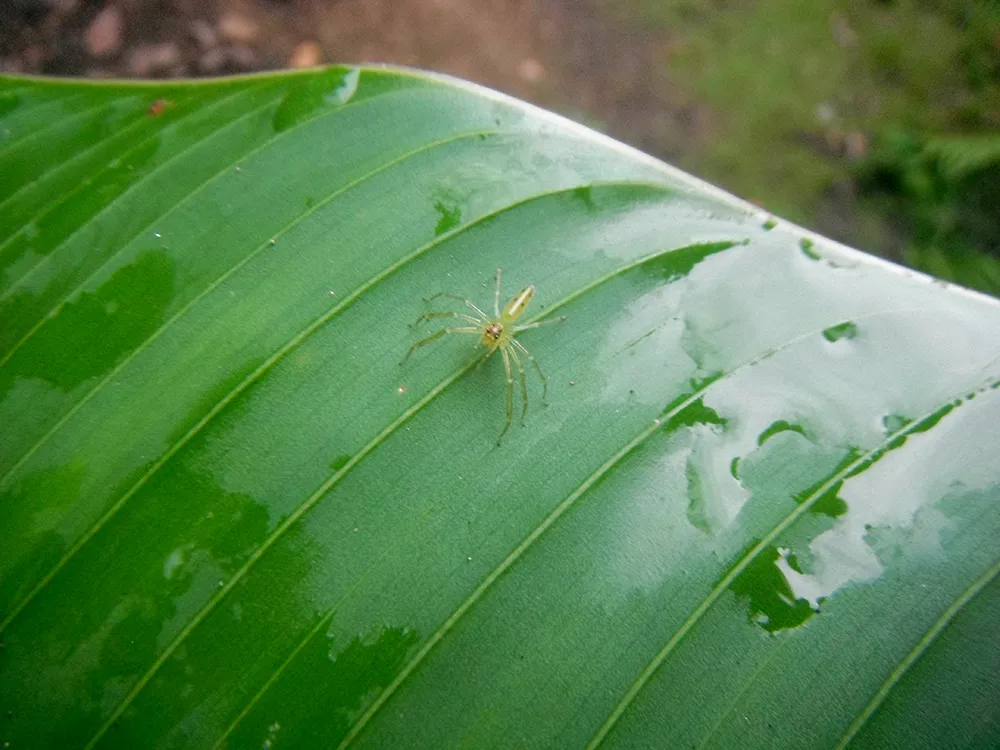
When preparing for a fight, males approach slowly with fangs extended. "cheliceral" fights are initiated when a male quickly butts its chelicerae against his opponent’s chelicerae. This may happen several times and, occasionally, one of the spiders retreats after several bouts of cheliceral butting.
Cuando se preparan para una pelea, los machos se acercan lentamente con los colmillos extendidos. Las peleas "quelicerales" se inician cuando un macho golpea rápidamente sus quelíceros contra los de su oponente. Esto puede ocurrir varias veces y, ocasionalmente, una de las arañas se retira después de varios golpes con los quelíceros.
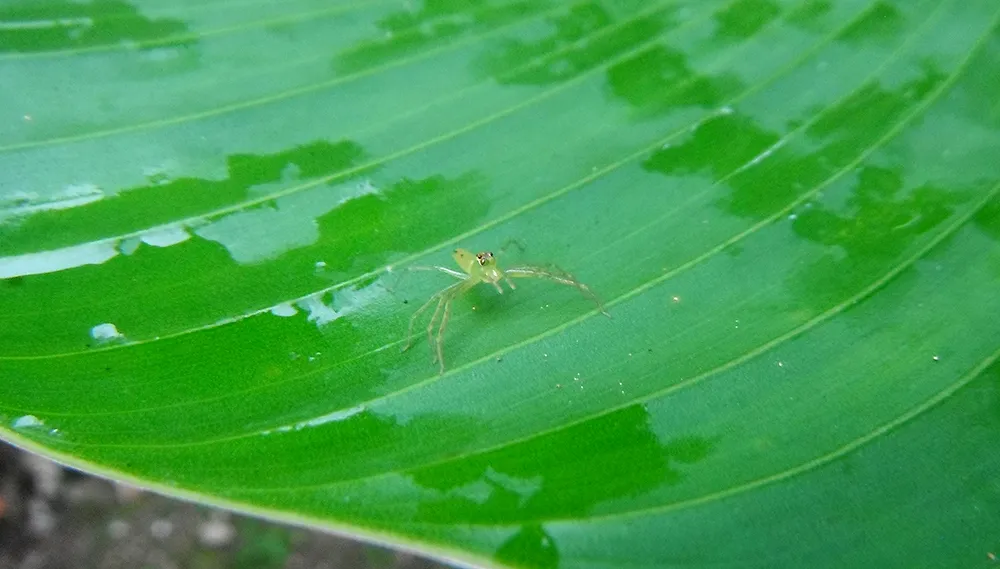
Most commonly, two males will engage in a prolonged pushing match in which they press their chelicerae and forelegs against each other for several seconds until one of them retreated.
Lo más habitual es que dos machos entren en una pelea prolongada de empujones en el que presionan sus quelíceros y patas delanteras el uno contra el otro durante varios segundos hasta que uno de ellos se retira.
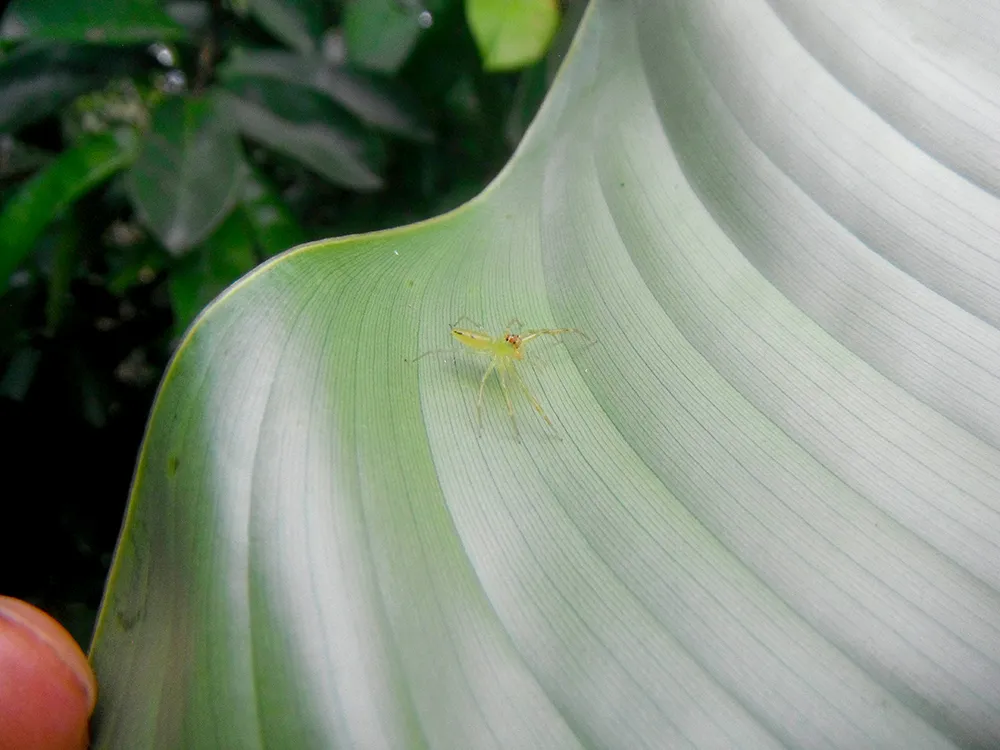
During some of these pushing fights, one of the males may disentangle his forelegs from his opponent’s forelegs and tuck it underneath his opponent’s abdomen, flipping his opponent into the air.
Durante algunos de estas peleas de empuje, uno de los machos puede desenredar sus patas delanteras de las de su oponente y meterla por debajo del abdomen de su oponente, lanzándolo al aire.
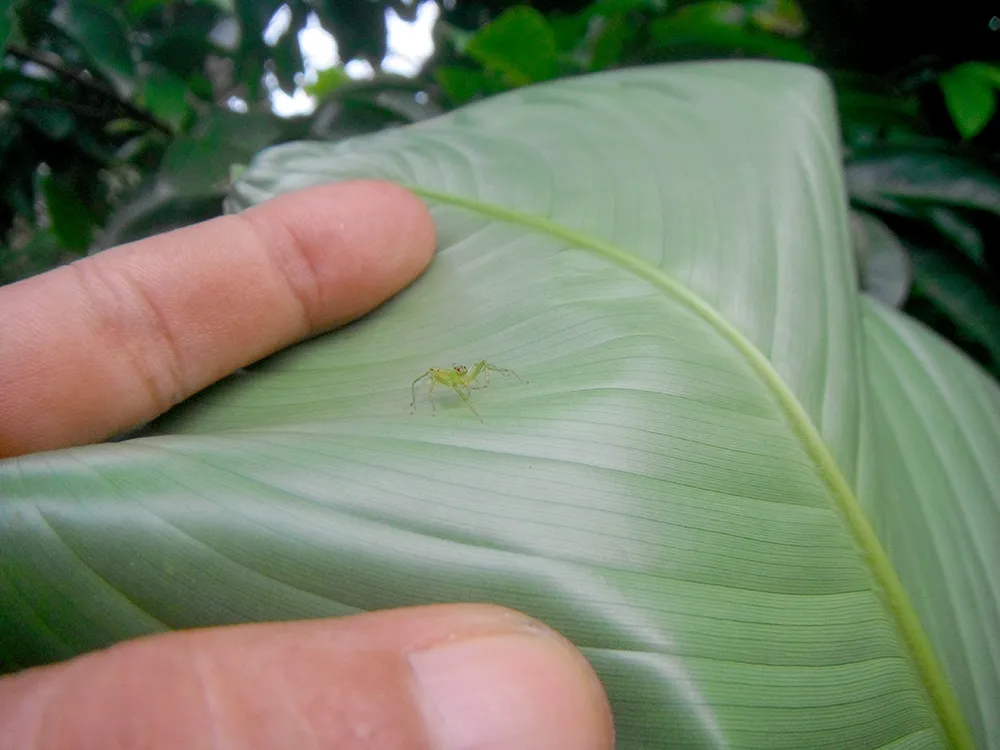
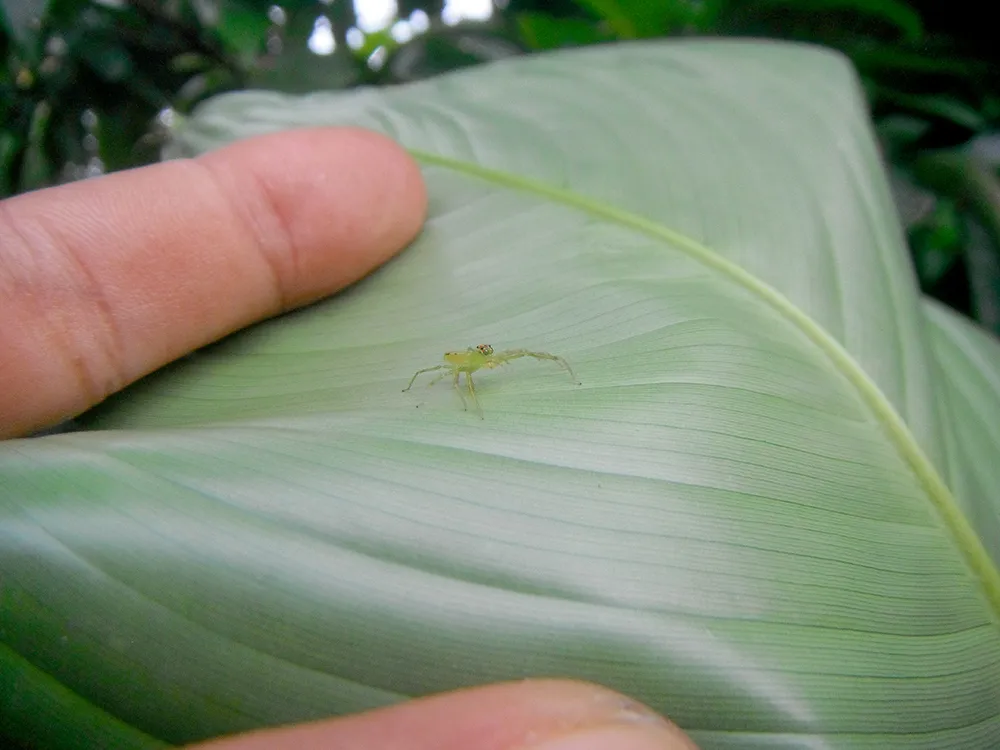
It has also been observed that two males sometimes lose their footing during push fights and grapple on the ground or even while hanging on to something in the air.
También se ha observado que dos machos a veces pierden el equilibrio durante las peleas de empuje y luchan en el suelo o incluso mientras cuelgan agarrados de algo en el aire.
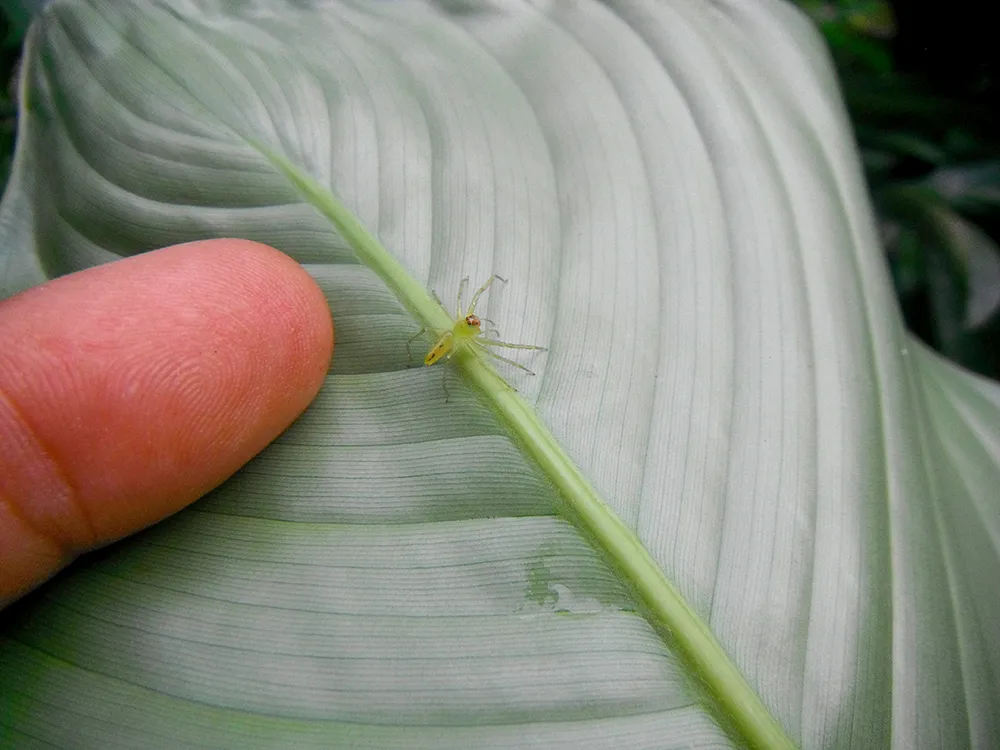
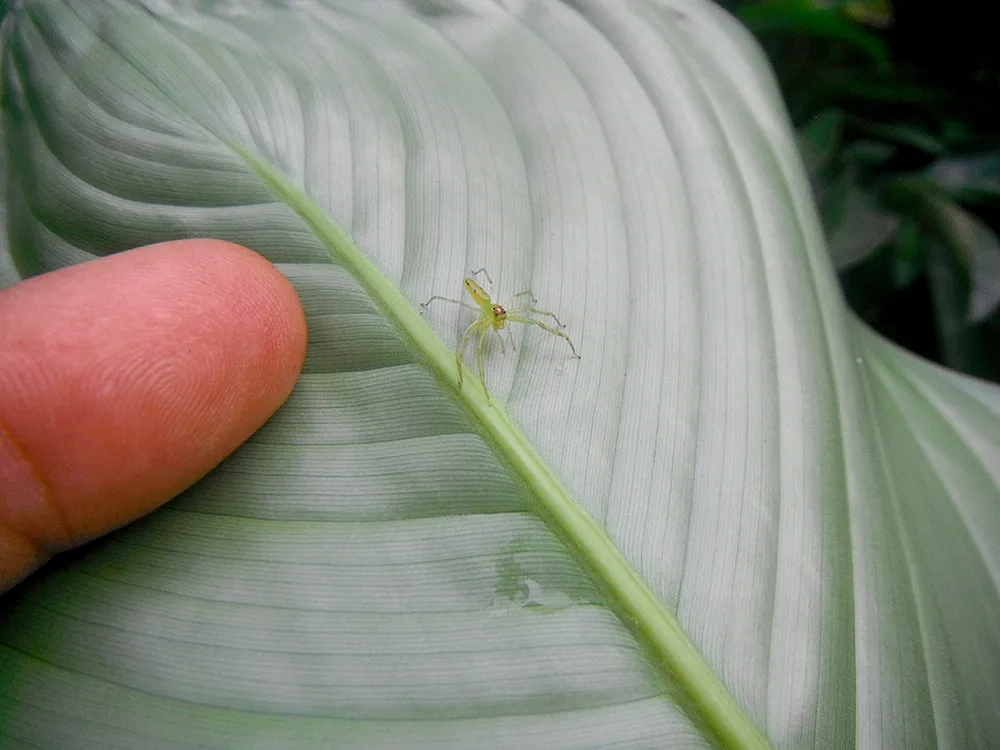
After a fight, the losing male becomes very submissive, retreating immediately when threatened. The winning male becomes highly aggressive if the loser persists in the area and may chase the loser. These fights can last 10 minutes. After a fight, the losing male becomes very submissive, retreating immediately when threatened. The winning male becomes highly aggressive if the loser persists in the area and may chase the loser. These fights can last 10 minutes.
Después de una pelea, el macho que pierde se vuelve muy sumiso, retirándose inmediatamente cuando es amenazado. El macho que gana se vuelve muy agresivo si el perdedor continúa en el área y puede perseguir al perdedor. Estas peleas pueden durar 10 minutos.

The third spider is a species of the genus Frigga, which is a genus that predominates in South America. These spiders are medium-sized and can reach 8 to 9 millimeters in length.
La tercera araña es una especie del género Frigga, que es un género que predomina en Sudamérica. Estas arañas son de tamaño mediano pudiendo alcanzar de 8 a 9 milímetros de longitud.
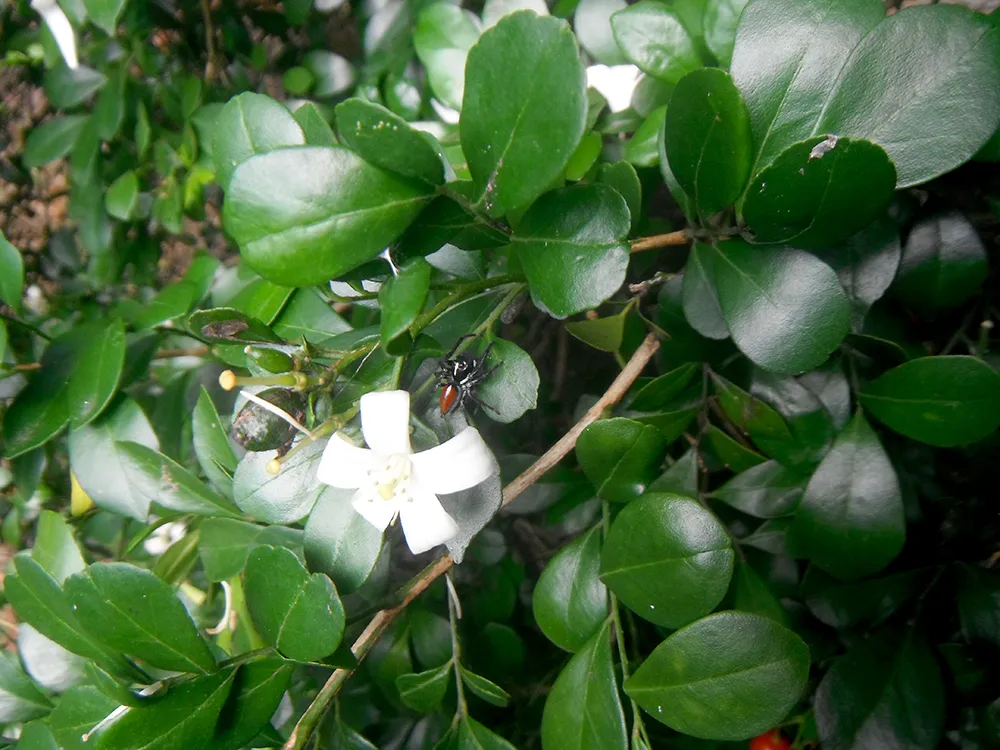
It has an ovate abdomen, and the head, when viewed from above, is pear-shaped, widest well behind the posterior lateral eyes.
Tiene un abdomen ovalado, y la cabeza, vista desde arriba, tiene forma de pera, más ancha por detrás de los ojos laterales posteriores.
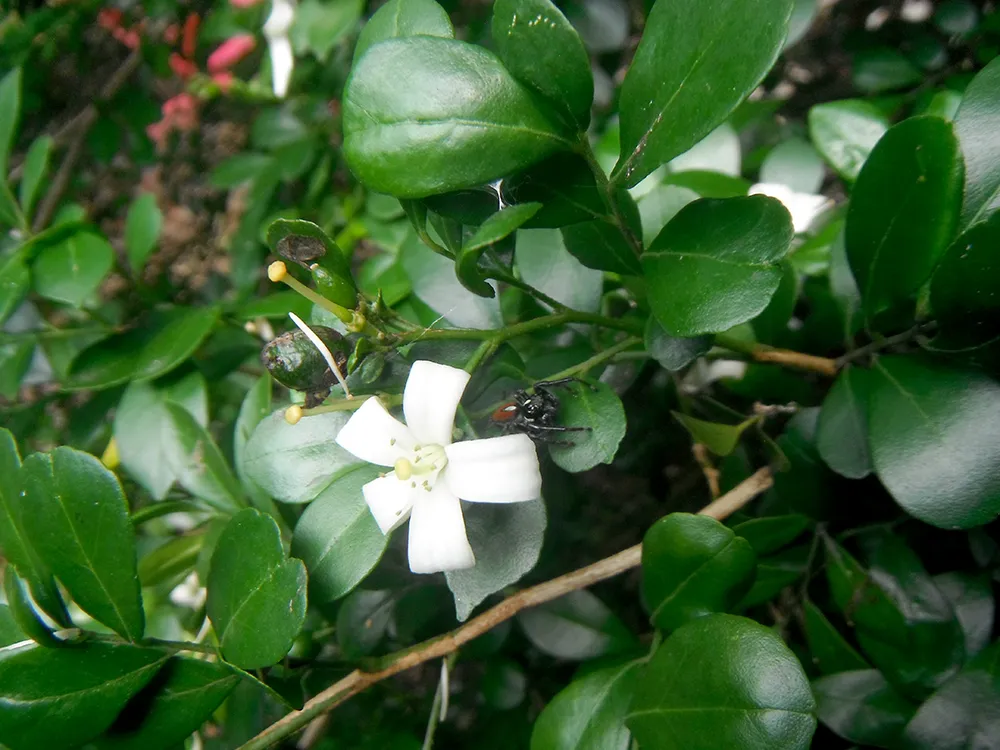
The carapace is very high. The chelicerae have a single retromarginal tooth and two promarginal teeth. The first leg is similar in shape to the others and the fourth pair of legs is the longest.
El caparazón es muy alto. Los quelíceros tienen un solo diente retromarginal y dos dientes promarginales. La primera pata tiene una forma similar a las demás y el cuarto par de patas es el más largo.
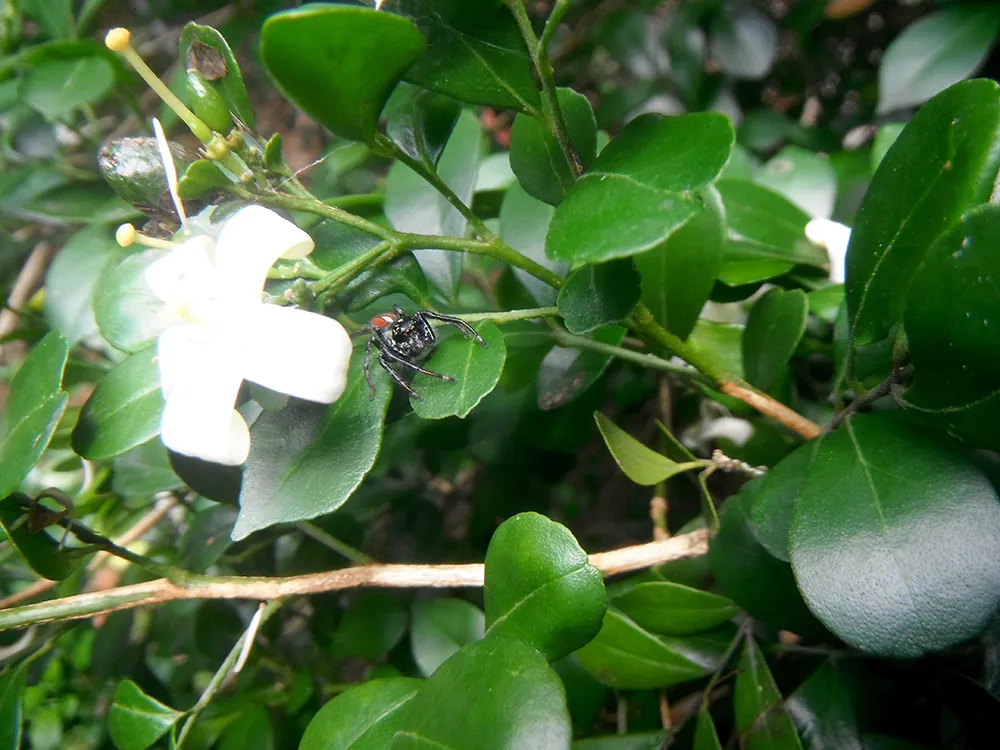
In reality, little is known about the biology of species in this genus.
En realidad, se sabe poco sobre la biología de especies de este género.

On the other hand, I commented that I photographed this last spider on a plant known as "orange jessamine" (Murraya paniculata), and near the jumping spider there was an insect that was apparently of the species Flatormenis proxima, which I show in the following photograph. I kept watching to see if the spider would find it and attack it by jumping on it but it did not happen. The event would have been very interesting because this insect of similar length (7 millimeters) to that of the spider has propulsive hind legs that deliver their power in a few milliseconds using a mechanism similar to a catapult, that is, they jump very fast, so perhaps it would have escaped from the jumping spider if it was attacked.
Por otro lado, comento que a esta última araña la fotografié en una planta conocida como “azahar de la India” (Murraya paniculata), y cerca de la araña saltarina se encontraba un insecto que al parecer era de la especie Flatormenis proxima, el cual muestro en la siguiente fotografía. Me quedé observando para ver si la araña lo encontraba y lo atacaba saltando sobre él pero no ocurrió. El evento hubiese sido muy interesante porque ese insecto de similar longitud (7 milímetros) a la de la araña posee patas traseras propulsoras que entregan su fuerza en unos pocos milisegundos utilizando un mecanismo similar a una catapulta, es decir, saltan muy rápido, por lo que quizás hubiese escapado de la araña saltarina si era atacado.
